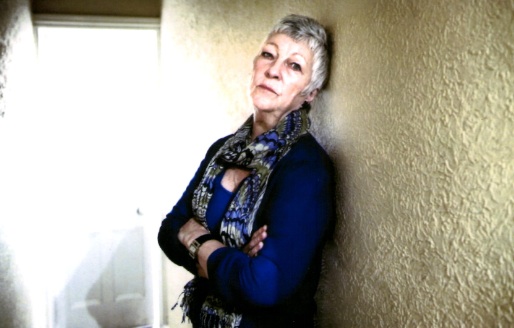WRONGLY ACCUSED: Show me a miscarriage of justice and, nine times out of 10, I will show you the blueprint that caused it, writes Eric Allison
- Eric Allison is the Guardian’s prison correspondent.
- This essay will feature in a new collection of essays (No defence: miscarriages of justice and lawyers) as part of the Justice Gap series and following on from Wrongly Accused: who is responsible for investigating miscarriages of justice? (to be published in association with Solicitors Journal and Wilmington). You can download that collection HERE.
- Contributors for No Defence include Eric Allison; Dr Ros Burnett; Prof Ed Cape; Dr Dennis Eady; Francis Fitzgibbon QC; Mark George QC; Andrew Green; Campbell Malone; Michael Mansfield QC; Mark Newby; Daniel Newman; Paul May; Dr Angus Nurse; Correna Platt; Julie Price; Dr Hannah Quirk; David Rose; Adam Sampson; Satish Sekar; and Tom Wainwright. Thanks to all.
‘Instead of closing the gap a huge chasm has just opened up right at the top of the system. It is a shocking and disgraceful manoeuvre by those who carry the core responsibility for maintaining and protecting the provision of justice… . This series of admirable essays has sought to identify and suggest remedies for those most disadvantaged by our judicial system.’
Michael Mansfield QC
__________________________________________
Eric Allison: Show me a miscarriage of justice and, nine times out of 10, I will show you the blueprint that caused it. There is a pattern, a template, in virtually all of these cases, made up of the following strands.
- First: you have a defendant who has little or no knowledge of the criminal justice system – and, in many cases, a touching belief in the integrity of that system.
- Two: investigating police officers who act as judge and jury, making up their minds they have the right person and going to great lengths to hamper the defence. Non-disclosure of evidence being the main obstacle they place in the path of truth.
- Three: prejudicial pre-trial reports by the media. Jurors are told to ignore this, but I suggest this is asking too much of them, especially in high profile cases.
- Four: poor legal representation. In every case I have studied, I have found glaring errors on the part of the defence lawyers. These include, failure to call witnesses, failure to seek full disclosure of evidence and a general lack of endeavour on the part of those chosen to lead defendants through the minefield of criminal trials. And, with cutbacks in legal aid biting deeper, this situation can only get worse.
- Last, but not least, those wrongly convicted face a hostile, intractable, appeal system, with an appeal court seemingly concerned only with maintaining the status quo, that being, the validity of the original conviction. Their Lordships never being more unyielding than when confronted with the assertion that an appellant’s trial lawyers let him or her down. The wigged ones all feed from the same trough and few will question the abilities of another of their ilk.
Other factors go towards the likelihood of more and more innocent people being convicted.
Reasonable doubt
The introduction of majority verdicts, in 1967, was a dangerous step. Given it is for the prosecution to prove guilt; I would have thought two people, out of 12, not being satisfied with the Crown’s case, constituted reasonable doubt? Not so and many high profile alleged miscarriages were the subject of majority verdicts -notably Jeremy Bamber, found guilty on a 10 to two basis.
The law changed in 2003 to allow into evidence of a defendant’s convictions for previous offences. Prior to then, unless a defendant attacked the character of a prosecution witness, juries were kept in the dark about previous convictions the people in the dock had to their name. Easier for the prosecution to prove it’s case. But is it fair? ‘Give a dog a bad name…’
Safety net
On paper, the Criminal Cases Review Commission (CCRC) provides a safety net for those floundering in the mire of a wrongful conviction. But the CCRC has disappointed those who hoped the establishment of such a body would deal swiftly and surely with miscarriages of justice.
In practice, the CCRC is under-resourced and seemingly unable to carry out the in-depth investigations required to uncover the truth when the justice system has got it wrong. Critics see them as gatekeepers to the court of appeal, trying to second guess how that tribunal will view the cases they refer, rather than the independent, fact finding, body hoped for.
Of all the alleged miscarriages of justice I have researched, the cases of Jeremy Bamber and Susan May stand out for two reasons: firstly, I have absolutely no doubt about their innocence and, secondly, they tick every box of the blueprint of how the system fails.
Both were people of hitherto good character, with no experience of the criminal justice system. If either had had one tenth of the knowledge of the law – and trial procedure – they have now, both would have walked free – of that I am certain. (Despite both falling victim to prejudicial pre-trial reporting and biased police investigations.) Both have had their cases rejected by the court of appeal twice. Both have had their submissions rejected by the CCRC – though Susan’s case is now being reviewed again by that body.
I am convinced there are more miscarriages of justice now than at any time since I have been a student of the system-a study going back over half a century. I am personally aware of well over a hundred, serious, cases that scream out to be looked at again.
And I repeat, I believe the situation is set to worsen a) because of cut backs in legal aid and b) the massive increase in convictions for historical sexual offences.
The latter area concerns me greatly – in the current, post-Saville, climate, I expect the conviction rates for these offences to take a surge. And yet this is one area where greater care than ever ought to be taken in deciding guilt or innocence. Almost uniquely, as far as criminal trials are concerned, a defendant can be convicted on the uncorroborated word of the accuser. There are usually no witnesses to such crimes and, because of the passage of time, no forensic or medical evidence to support the allegations. It is one person’s word against another.
I have researched several convictions for historical sexual offences and, in some cases, my findings are deeply troubling. It is a murky world to peer into and any concern for the safety of such a conviction can be taken as having some sympathy for people deemed beyond the pale in the court of public opinion.
Questioning some of those convictions is to risk being accused of having no understanding of the awful trauma endured by victims of sexual abuse. But two wrongs never made a right and some things need to be said.
Consider this: Albany prison, on the Isle of Wight holds some 560 prisoners – virtually all sex-offenders, many convicted of historical offences. Around half of the population of Albany is in denial. This means they are not addressing their offending behaviour and not participating in treatment programmes. Because of their plea of innocence, they will never become eligible for parole. Many are serving extremely long sentences, so they count the difference in years and some will die in prison. They will not have their security classification downgraded – a move which invariably means better prison conditions – and, on their eventual release, will find their place on the sex offenders register coming under intense scrutiny.
Without doubt, some of these men will be in denial because they cannot come to terms with the offences they have committed. But over 250 of them, in one jail? Something is wrong.
Like many, I hoped, with the freeing of the Birmingham Six, Guildford Four et al and the setting up of the CCRC, we had seen the back of wholesale wrongful convictions. The ever burgeoning case file of alleged miscarriages of justice tells me the hope was in vain. We are back to where were before we thought: ‘This cannot happen again’.



